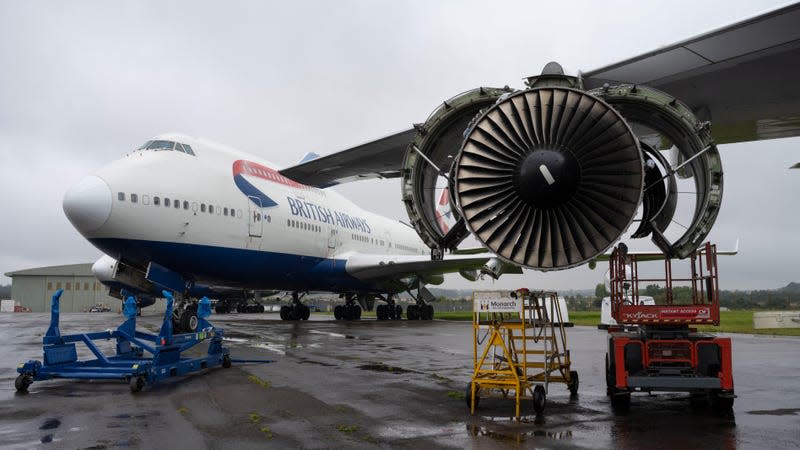Here's How Often Airlines Replace the Jet Engines on Passenger Planes

Unless you’re an airline mechanic, the maintenance of commercial airliners isn’t a worry in your everyday life. The aircraft that carry hundreds of millions of passengers from airport to airport worldwide must be adequately maintained for the safety of everyone aboard and for optimum fuel economy. Simply Flying has published an explainer on the various factors that determine how many engines a plane will use during its lifetime.
In case you missed it:
Tesla Sells Out of Steering Wheels as Owners Rush to Replace Yokes
AWD RX-7 vs. Trackhawk, GR Yaris-Powered AE86: The Best Automotive Videos on YouTube This Week
First, to determine how many engines an aircraft will use over its lifespan, it is important to know how long that lifespan is. Instead of mileage like a road vehicle or a frequent flyer program, an airliner’s longevity is measured in flight cycles. A flight cycle consists of a completed takeoff and landing regardless of flight distance, with touch-and-go landings also counting as a completed flight. The most strenuous portions of a flight for an aircraft are the takeoffs and landings.
Read more
How Many Engines Do Airliners Go Through In A Typical Lifespan?
The rated lifespan of a plane can vary widely by fuselage size and composition. Short-range narrowbody aircraft, like the Airbus A320, can last almost 50,000 flight cycles. According to Simple Flying, long-range widebody planes have a life that can range between 25,000 and 45,000 cycles. For example, the iconic Boeing 747 has a manufacturer-estimated lifespan of 35,000 flight cycles. The composite-structured Boeing 787 Dreamliner can endure 44,000 flight cycles, 9,000 more than the jumbo jet.
The plane’s jet engines will not last the aircraft’s entire lifespan and will have to be replaced at some point. Engines are overhauled two or three times before being taken out of service. For narrowbody engines, this usually happens after 12,000 flight cycles. The number of cycles is cut down to 8,000 until the second overhaul and then halved to 4,000 for the third. However, airlines may simply replace the engines instead of spending millions on further rebuilds.
Using the rough arithmetic we have established, an Airbus A320 would have to use three or four sets of engines across its entire lifespan. If our theoretically A320 is exclusively assigned to a four-flight-per-day short-haul schedule, the aircraft could spend at least three decades in service. Hopefully, 30 years would be enough time to recoup the cost of the $100 million airliner.
More from Jalopnik
Sign up for Jalopnik's Newsletter. For the latest news, Facebook, Twitter and Instagram.

 Yahoo Autos
Yahoo Autos 